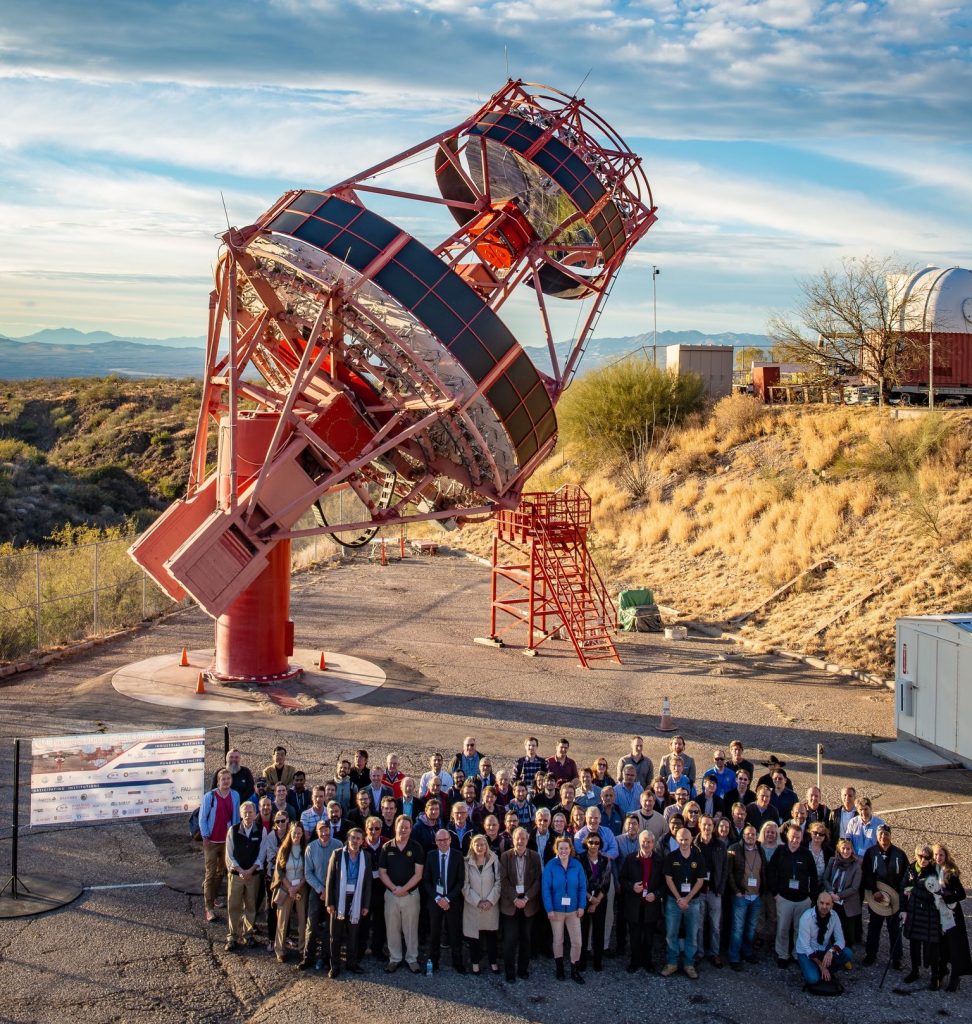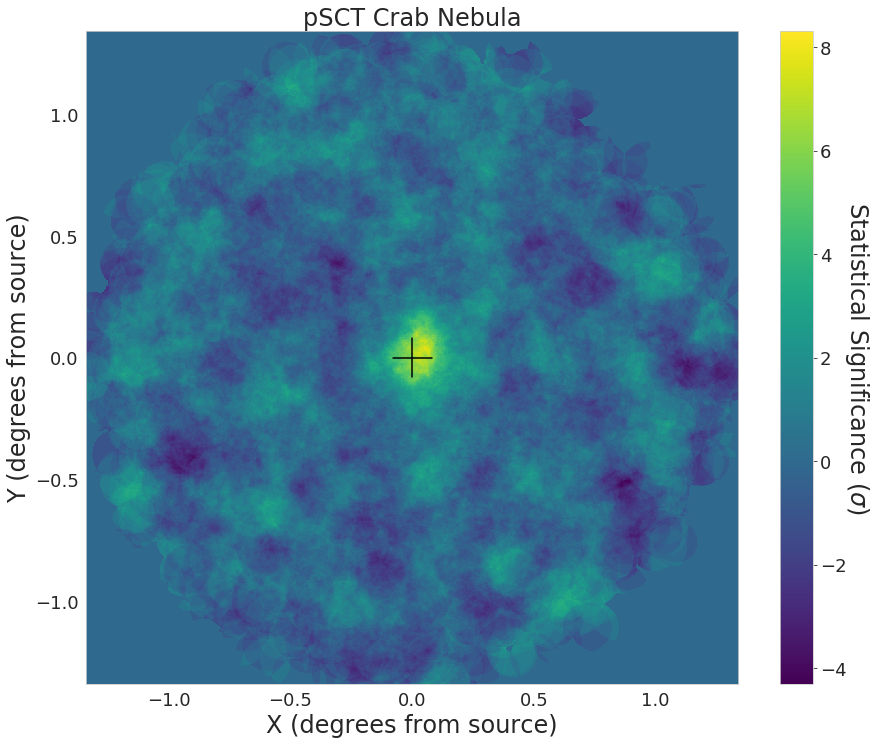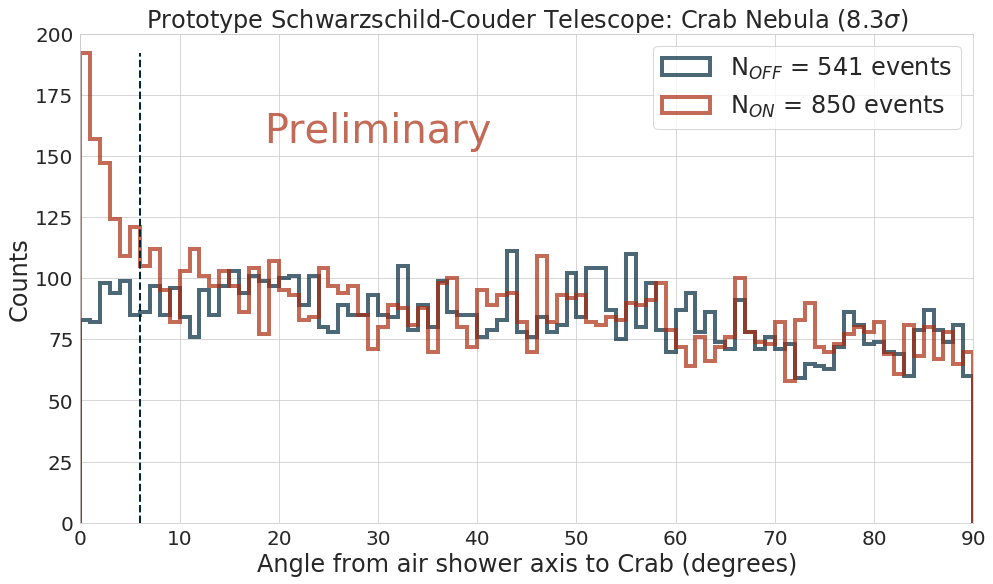[Research] Prototype CTA Telescope Detects Gamma Rays from the Crab Nebula
Prototype Schwarzschild–Couder Telescope (pSCT, see Fig. 1), one of prototype telescopes developed for the Cherenkov Telescope Array (CTA) project, observed the Crab Nebula and successfully detected very-high-energy gamma rays from the object with a statistical significance of 8.3σ (Figs. 2–4). The viability of two new technologies used in pSCT, the Schwarzschild–Couder optical system with a large field of view of 8 degrees and a small camera pixel size of 6 mm realized by using silicone photomultipliers (SiPMs), have been proved by this observations.
Professor Hiroyasu Tajima (KMI Associate member) and Jr. Associate Professor Akira Okumura (KMI) have been actively working in the hardware and software development of several different CTA telescope designs. For the pSCT development, the KMI group contributed in development of SiPMs, development of waveform sampling and readout electronics, camera control and data acquisition software development, and ray-tracing simulation of the telescope.
CTA is the next-generation ground-based gamma-ray observatory to be built in both the Northern (La Palma, Spain) and Southern Hemisphere (Paranal, Chile). It will observe high-energy objects with an energy coverage from 20 GeV to beyond 300 TeV by deploying more than 100 gamma-ray telescopes.
We have been working on many hardware and software components of pSCT for more than 10 years together with international collaborators in CTA. This observation result is an important milestone for realization of the full CTA array to be built in 2020s. I am looking forward achieving more scientific CTA results, especially indirect dark-matter detection. (Akira Okumura)
Press Release Information (CTA)
https://www.cta-observatory.or







